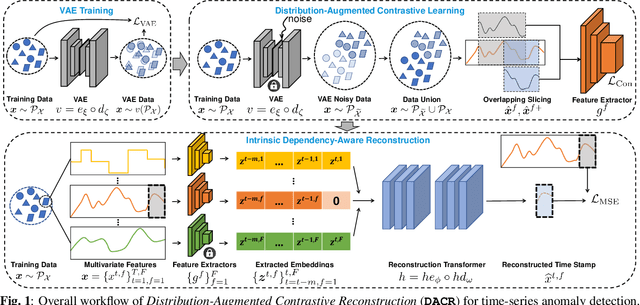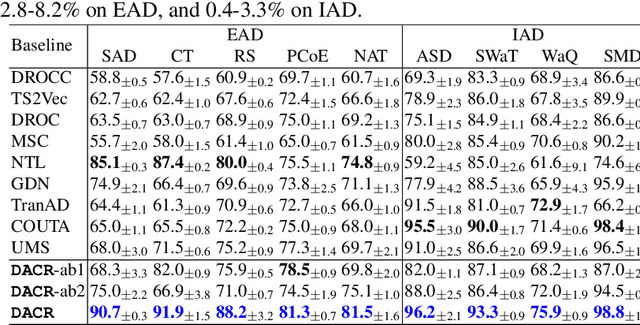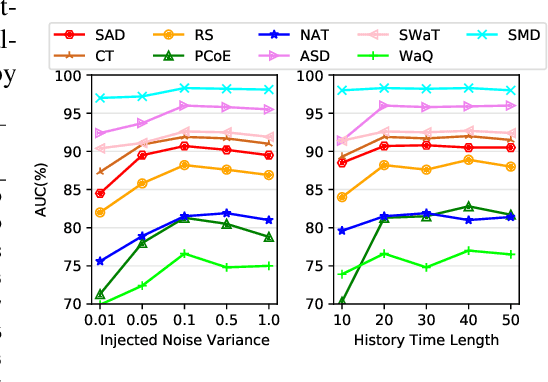DACR: Distribution-Augmented Contrastive Reconstruction for Time-Series Anomaly Detection
Paper and Code
Jan 20, 2024



Anomaly detection in time-series data is crucial for identifying faults, failures, threats, and outliers across a range of applications. Recently, deep learning techniques have been applied to this topic, but they often struggle in real-world scenarios that are complex and highly dynamic, e.g., the normal data may consist of multiple distributions, and various types of anomalies may differ from the normal data to different degrees. In this work, to tackle these challenges, we propose Distribution-Augmented Contrastive Reconstruction (DACR). DACR generates extra data disjoint from the normal data distribution to compress the normal data's representation space, and enhances the feature extractor through contrastive learning to better capture the intrinsic semantics from time-series data. Furthermore, DACR employs an attention mechanism to model the semantic dependencies among multivariate time-series features, thereby achieving more robust reconstruction for anomaly detection. Extensive experiments conducted on nine benchmark datasets in various anomaly detection scenarios demonstrate the effectiveness of DACR in achieving new state-of-the-art time-series anomaly detection.
 Add to Chrome
Add to Chrome Add to Firefox
Add to Firefox Add to Edge
Add to Edge